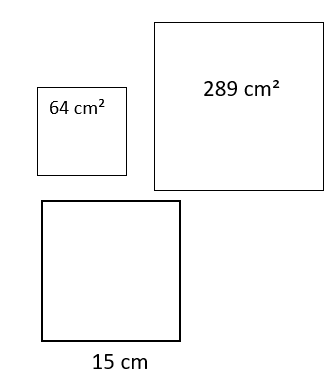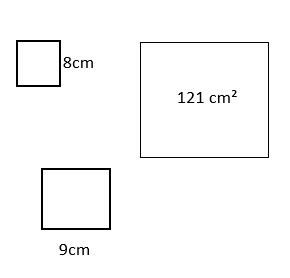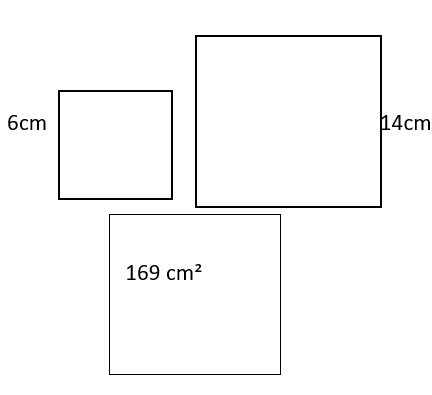
Models of Pythagorean Thereom
Quiz
•
Mathematics
•
8th Grade
•
Medium
+1
Standards-aligned
Rosalinda Alvarez
Used 190+ times
FREE Resource
10 questions
Show all answers
1.
MULTIPLE CHOICE QUESTION
2 mins • 1 pt

1. When three squares are joined at their vertices to form a right triangle, the combined area of the two smaller squares is the same as the area of the larger square. Do these three squares support this statement?
yes
no
Tags
CCSS.8.G.B.8
2.
MULTIPLE CHOICE QUESTION
3 mins • 1 pt

When three squares are joined at their vertices to form a right triangle, the combined area of the two smaller squares is the same as the area of the larger square. Do these three squares support this statement?
yes, because the area of the smaller square and the area of the larger square is equal to the area of the medium square.
yes, because the sum of the area of smaller square and the area of the medium square is equal to the area of the larger square.
No, because the difference of the area of the medium square and the area of the larger square is equal to the area of the smaller square.
No, because the sum of the area of smaller square and the area of the medium square does not equal to the area of the larger square.
Tags
CCSS.8.G.B.8
3.
MULTIPLE CHOICE QUESTION
3 mins • 1 pt

When three squares are joined at their vertices to form a right triangle, the combined area of the two smaller squares is the same as the area of the larger square. Do these three squares support this statement?
yes, because the sum of the area of the large square and the area of the small square is equal to the area of the medium square.
Yes, because the sum of the area of the small square and the area of the medium square is equal to the area of the larger square.
No, because the sum of the area of the large square and the area of the medium square is not equal to the area of the smaller square.
No, because the sum of the area of the small square and the area of the medium square is not equal to the area of the larger square.
Tags
CCSS.8.G.B.8
4.
MULTIPLE CHOICE QUESTION
1 min • 1 pt

When three squares are joined at their vertices to form a right triangle, the combined area of the two smaller squares is the same as the area of the larger square. Do these three squares support this statement?
yes
no
Tags
CCSS.8.G.B.8
5.
MULTIPLE CHOICE QUESTION
1 min • 1 pt

When three squares are joined at their vertices to form a right triangle, the combined area of the two smaller squares is the same as the area of the larger square. Do these three squares support this statement?
Tags
CCSS.8.G.B.8
6.
MULTIPLE CHOICE QUESTION
2 mins • 1 pt

When three squares are joined at their vertices to form a right triangle, the combined area of the two smaller squares is the same as the area of the larger square. Do these three squares support this statement?
yes
no
Tags
CCSS.8.G.B.8
7.
MULTIPLE CHOICE QUESTION
5 mins • 1 pt
1. When three squares are joined at their vertices to form a right triangle, the combined area of the two smaller squares is the same as the area of the larger square.
Which three squares do NOT support this statement?
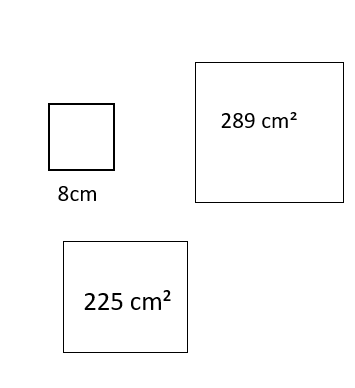
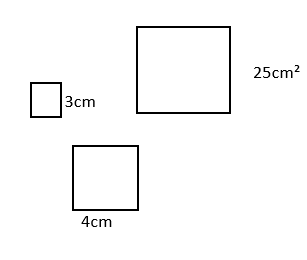
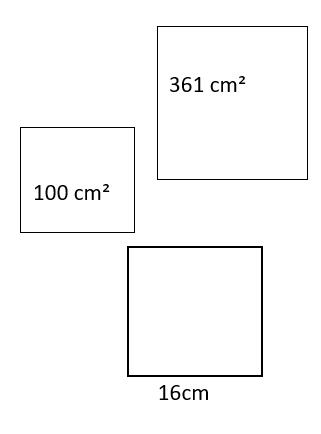
Tags
CCSS.8.G.B.8
Create a free account and access millions of resources
Similar Resources on Wayground

10 questions
Grade 6 | Unit 2 | Lesson 2: Representing Ratios with Diagrams | Practice Problems
Quiz
•
6th Grade - University

9 questions
Introduction of Pythagorean Theorem
Quiz
•
8th Grade

12 questions
Intro to Pythagorean
Quiz
•
8th Grade

9 questions
Side Length of a Square
Quiz
•
8th Grade - University

14 questions
Area of Squares Rectangles Parallelograms Trapezoids
Quiz
•
5th Grade - University

10 questions
Pythagorean Theorem
Quiz
•
8th Grade

15 questions
Introduction to Pythagoras
Quiz
•
8th Grade - University

10 questions
Perimeter Rectangles and Squares Review
Quiz
•
6th Grade - University
Popular Resources on Wayground

10 questions
Lab Safety Procedures and Guidelines
Interactive video
•
6th - 10th Grade

10 questions
Nouns, nouns, nouns
Quiz
•
3rd Grade

10 questions
9/11 Experience and Reflections
Interactive video
•
10th - 12th Grade

25 questions
Multiplication Facts
Quiz
•
5th Grade

11 questions
All about me
Quiz
•
Professional Development

22 questions
Adding Integers
Quiz
•
6th Grade

15 questions
Subtracting Integers
Quiz
•
7th Grade

9 questions
Tips & Tricks
Lesson
•
6th - 8th Grade
Discover more resources for Mathematics

24 questions
3.1 Parallel lines cut by a transversal
Quiz
•
8th Grade

20 questions
Adding Integers
Quiz
•
6th - 8th Grade

10 questions
Rigid Transformations Grade 8 Unit 1 Lesson 7
Quiz
•
8th Grade

20 questions
Rational and Irrational Numbers
Quiz
•
8th Grade

15 questions
Solving Equations with Variables on Both Sides Review
Quiz
•
8th Grade

20 questions
Operations with integers
Quiz
•
8th Grade

15 questions
Solving Equations With Variables on Both Sides
Quiz
•
8th Grade

20 questions
Translations
Quiz
•
8th Grade

